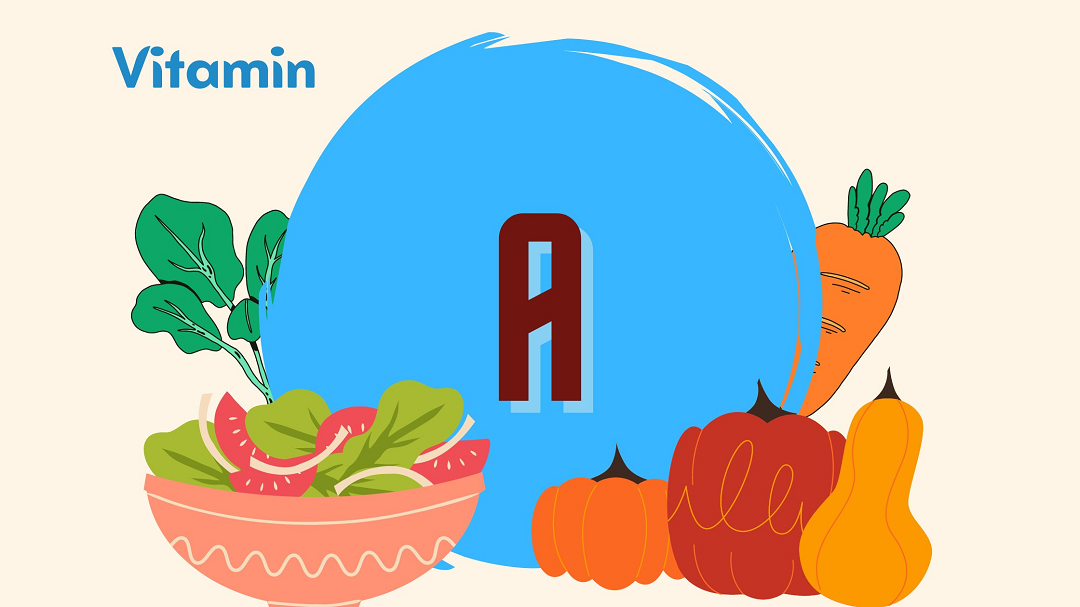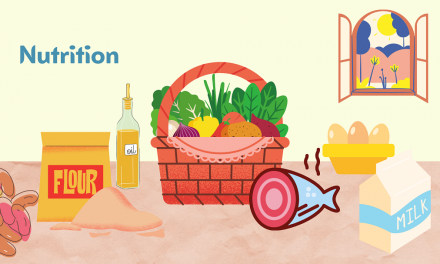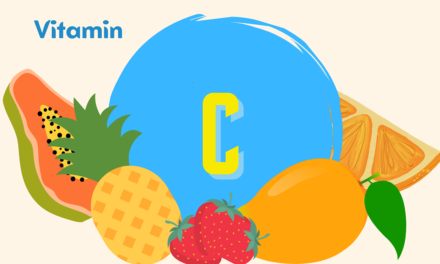In this article we will be covering the best sources of Vitamin A, understand its functions in necessary detail, and comprehend what its deficiency can result into.
In a previous larger article, I covered nutrition in general and how to consume the 6 essential nutrients our body needs properly for health and fitness.
Building upon that I am doing a series of articles to expound on those nutrients and help you find the best sources of carbohydrates, lipids (fats and oils), proteins, vitamins, and minerals.
Because just telling you how to consume them properly won’t help. I must tell you where to get the best quality of them.
The reason I am doing this series is that many times our cognitive or physical abilities are hampered, and we feel sick or demotivated because of improper nutrition, and not because we are disabled in any way. So, such a hidden roadblock must be brought to light and removed asap because it comes between us and the attainment of our goals.
Please take note that I am doing this based on the research done on the internet and from the benefits or trouble I have experienced by adhering to a healthy or unhealthy diet.
So, although all the information presented here is from trusted sources this is simply a guide and not professional advice.
I strongly recommend taking professional advice if this article sparks that curiosity in you.
Basics of Vitamin A
A group of fat-soluble compounds extremely important for human health are generically referred to as Vitamin A.
Vitamin A compounds come in two different forms – preformed vitamin A and provitamin A. The first one comes from animal sources and the other one from plants.
Preformed Vitamin A is the active form of the vitamin, and it can be readily used by your body to carry out its various functions. It’s found in animal products like chicken, fish, dairy, and meat. All these include the compounds retinol, retinal and retinoic acid.
Provitamin A carotenoids include alpha-carotene, beta-carotene, and beta-cryptoxanthin. These are the inactive form of vitamin A found in plants.
Foods high in provitamin A:
- Papaya (yellow fruits)
- Red Peppers
- Cantaloupe
- Winter Squash
- Pumpkin
- Sweet potatoes
- Carrots
- Kale
- Spinach (leafy vegetables)
Provitamin A in these foods is converted in its active form in your body before absorption.
A vitamin is also known as retinol and it has several important functions in your body which are essential for your health.
It supports cell growth, vision, immune function, and fetal development.
It also supports vision in dim light and keeps your skin and the lining of some parts of the body, such as the nose, healthy.
Benefits of Vitamin A
Protects eyesight from night blindness and age-related decline
Vitamin A is necessary to convert the light that enters your eyes into an electrical signal to send to the brain. Eating diets rich in beta-carotene may slow down the decline in eyesight that some people experience as they age.
As you can see that this vitamin plays the role of preserving one of our most important sensory organs.
Potent antioxidant
Provitamin A carotenoids have antioxidant properties as they come from plant sources.
Carotenoids safeguard your body from free radicals, which are highly reactive molecules that are produced when your body breaks down food or is exposed to tobacco smoke and radiation. These molecules can harm your body by producing oxidative stress.
Oxidative stress is linked to chronic conditions such as cancer, heart disease, diabetes, and cognitive decline.
While we are aware of the seriousness of these chronic conditions, we should also understand the meaning of cognitive decline.
Cognitive decline is the weakening of mental capabilities like learning, understanding, memory, and thinking.
Diets high in carotenoids are associated with a lowered risk of many of these conditions.
Vitamin A is also essential for male and female reproduction because of its role in sperm and egg development.
Supports Organ function
Healthy amounts of vitamin A help the lungs, heart, and kidneys function properly by promoting the growth of healthy cells and tissues.
In a review published in 2018, it was found that vitamin A plays a crucial role in the development and maturation of lung tissue. Supporting complete lung function. In correlation, the same review found that vitamin A deficiency is related to an increased risk of developing lung problems like asthma and respiratory infections like pneumonia and flu.
Problems caused by vitamin A deficiency
Vitamin A deficiency is rare if you consume a varied diet that comprises different foods. Especially if it includes leafy vegetables.
However, as I say awareness is power and so it’s better that we learn about the complications that can arise from vitamin A deficiency.
World Health Organization stated that vitamin A deficiency is the foremost cause of preventable blindness in children worldwide.
Vitamin A deficiency can increase the severity and the risk of death from infections like measles and diarrhoea. Research has determined that vitamin A deficiency increases the risk of anaemia and death in pregnant women. It can even impact the foetus by slowing growth and development.
How much vitamin A You Need
Please keep in mind that you can get all the Vitamin A you need from your diet. Also, vitamin A is fat-soluble and so any excess quantities that your body does not need immediately gets stored for future use. Which means you do not need to consume it every day.
Regardless of that just keep eating a healthy diet and let the smart systems of your body do the thinking work.
The amount of vitamin A adults aged 19 to 64 require:
- 700 µg a day for men
- 600 µg a day for women
Side effects of over-consumption of vitamin A
As I mentioned vitamin A is fat-soluble and gets stored in your body when the body doesn’t need it.
Excess consumption can create toxicity.
Hypervitaminosis A is caused by consuming excess preformed vitamin A through diet or supplements.
Symptoms include nausea, dizziness, headaches, pain, and in extreme cases death. Which is highly unlikely in day-to-day cases.
Overconsumption through diet is near impossible but supplements and medications containing the vitamin can lead to that.
Consuming provitamin A from plant sources does not carry the same risks as consuming preformed vitamin A because its conversion to active form is regulated by your body.
Conclusion
As you learned in this post that vitamin A plays a lot of important roles in sustaining and enhancing our well-being. Both physically and mentally.
In this series of posts, I am trying to inform you about the role proper nutrition plays in supporting your life and how neglecting it can lead to demerits that won’t be easily noticed.
You might wonder why I can’t focus, remember things, learn properly, or perform at my best or why I feel sick all the time. You might either just accept it as your reality or spend tons of money on doctor consultations and medications, which in many cases doesn’t solve the long-term problem.
While the actual solution to your ailments was always in your control and as simple as consuming a proper nutrient-filled diet.
These are the basics of vitamin A. If you want to continue learning about other vitamins then just click on the names of B, C, D, E, and K and it will take you to their corresponding articles.
To learn about the best sources of carbohydrates, lipids (fats and oils), and protein visit their pages.
If you want to get an overview of nutrition then read the article “6 Essential Nutrients Your Body Needs and How to Consume them for Fitness” and to learn about the basics of exercise read the article Basics of Exercise and How to Select Appropriate Activity Levels for Fitness.
I would also encourage you to check out the article on Pranayama, which I believe is one of the best ways to enhance our health and uplift our spirits, apart from good nutrition and exercise, and on the same wavelength also read the article on sound healing which is a scientific and spiritual discussion on the healing power of sound and frequencies.
I hope you get tons of value from this series and if you do then consider subscribing to Soulo’s YouTube channel or following it on Instagram. You can also join my newsletter list by using the form below.
Thanks for reading and I hope you apply everything you learn on Soulo Motivation and enhance your life one day at a time.








